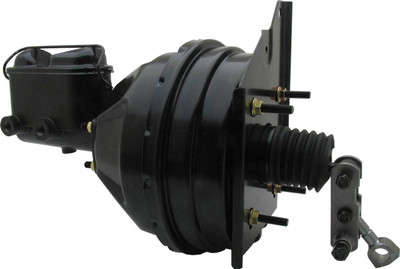Red63440
Well-Known Member
Last year I converted my 1964 Fury to disk brakes. To do this I had to change from a single pot master cylinder to the new dual pot master cylinder and also changed the lines and distribution block to split the front and rear brakes. Everything has been installed and all bled but now I have to stand on the pedal to even get the car to slow up at idle. The factory booster doesn’t seem to be working at all now and I’m at a loss as to what to do. I don’t want to send the booster out for rebuild if it’s not the problem. If I clamp off the vacuum line to the booster I get a hard pedal, removing the clamp from the vacuum line allows the pedal to go about half way to the floor but the brakes don't work any better. If someone sees something I did wrong please speak up,
Thank you
Thank you
Last edited:


















